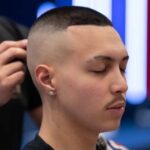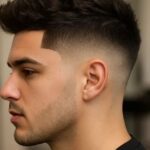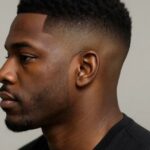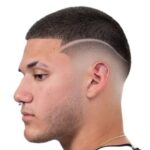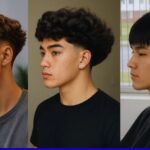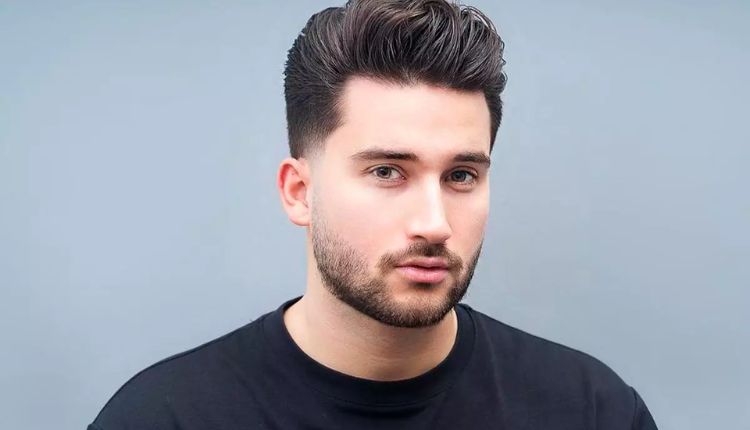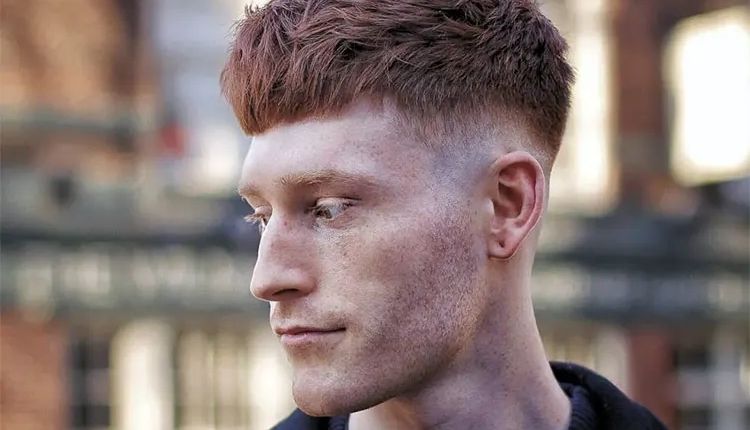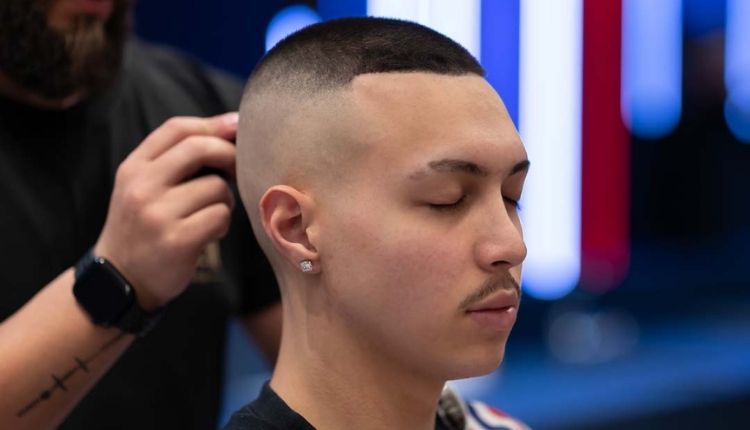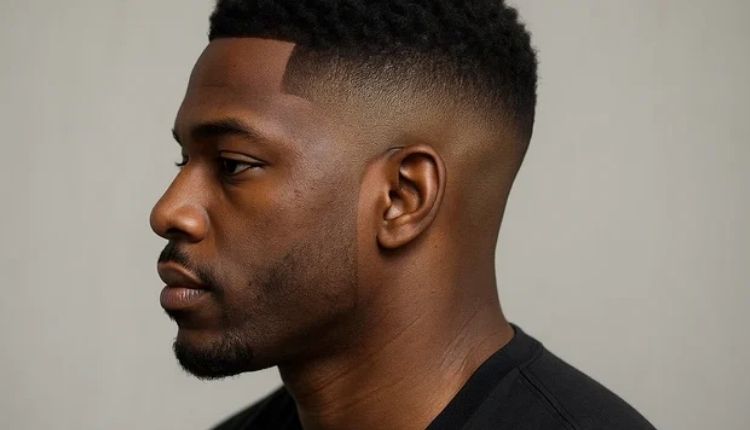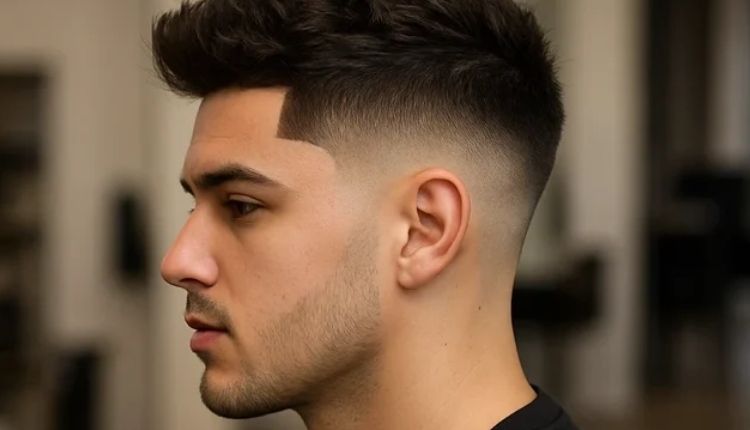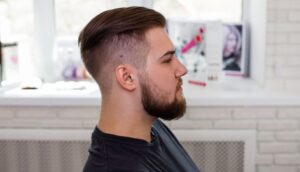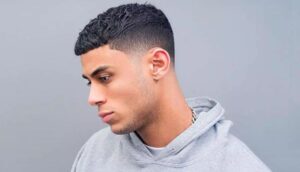Combining the easy and sharp look of a taper fade with the fashionable, easy appeal of textured hair, this style gives versatility and a modern side. Whether you want a professional appearance or an informal, road-style vibe, the textured taper fade can be tailor-made to fit your persona and way of life.
Understanding this coiffure begins with breaking down its two number one additives: the taper fade and textured hair. The taper fade includes regularly shortening the hair period from the edges and the back of the pinnacle closer to the crown, developing a smooth gradient effect. Textured hair, alternatively, refers to hair that is styled to emphasise natural waves, layers, and extent, giving the appearance of depth and measurement.
Origins and Popularity of the Taper Fade
The taper fade has a protracted-standing history rooted in classic barbering. Originally an easy method to combine shorter hair around the ears and neckline, it evolved into a mainstream fashion embraced with the aid of guys worldwide. The fade gives a neat and clean end that complements numerous hair sorts and face shapes.
The upward thrust in popularity of the textured taper fade coincided with the conversion of fashion tendencies favouring more herbal and convenient looks. Social media, influencers, and celebrities have all played a part in propelling this coiffure into the limelight, making it a pinnacle preference among more youthful generations, in addition to specialists who prefer a cultured but elegant look.
Understanding the Textured Hair Component
Texture in hair refers to how the hair certainly falls and moves. Hair texture may be instantly wavy, curly, or coily, and each texture offers extraordinary styling opportunities. When hairstylists communicate about approximately textured hair in the context of a taper fade, they normally suggest including layers and the use of strategies like point cutting or razoring to create separation and volume.
A textured top can add measurements and existence to the hair, making the overall look much less uniform and more dynamic. This effect is ideal for folks who want to avoid a flat or overly groomed coiffure. The texture encourages movement and may be styled to appear messy or managed depending on preference.
How the Textured Taper Fade is Created
The creation of a textured taper fade calls for a skilled barber or stylist. The manner begins with the taper fade on the perimeters and back, which entails clipping the hair shorter step by step from the pinnacle downward. Clippers with distinct defend sizes are used to reap an easy gradient effect, regularly blending seamlessly into the longer hair on top.
After establishing the fade, the stylist went directly to the textured top. Various reducing strategies are used to do away with bulk, add layers, and decorate the natural wave or curl of the hair. This might consist of scissors, razors, or thinning shears to cut thick sections and add separation.
Styled merchandise is regularly used later on to outline the texture and preserve the form. Common merchandise consists of pomades, waxes, clays, and sea salt sprays, depending on the desired finish, whether or not matte, brilliant, or herbal.
Different Variations of the Textured Taper Fade
The textured taper fade isn’t a one-length-suits-all coiffure. It can be custom-designed in numerous ways to complement extraordinary face shapes, hair kinds, and personal tastes.
Some popular variations consist of:
High Taper Fade with Texture: The fade starts higher on the head, creating a bolder assessment among the top and sides. This version works properly with thick or curly hair textures.
Low Taper Fade with Texture: The fade begins closer to the ears, presenting a more subtle transition. This suits people who decide upon a conservative look but need texture on top.
Mid Taper Fade with Textured Crop: This balances between high and coffee fades and pairs properly with textured vegetation, which might be shorter textured patterns.
Textured Quiff with Taper Fade: For a greater voluminous pinnacle, the textured quiff combines a raised front styled with extent and a smooth taper fade.
Each variation lets wearers express individuality at the same time as maintaining the middle aesthetic of the textured taper fade.
Who is the Textured Taper Fade Best Suited For?
One of the key advantages of the textured taper is its versatility. It works nicely for almost all hair types—whether straight, wavy, curly, or coiled—and can be adjusted for special hair densities. Men with thick hair especially benefit from the feel because it reduces bulk and provides motion.
The fade itself is flattering for many face shapes. For instance, a high taper fade can elongate the face, making it ideal for spherical or square faces, at the same time as a low taper fade complements oval and heart-shaped faces.
Professionals, college students, athletes, and artists alike find this style attractive because it blends a cultured end with a present-day appearance. The textured taper fade is likewise an exquisite choice for guys searching for a low-maintenance haircut that still appears stylish and sharp.
Styling Tips for the Textured Taper Fade
Styling the textured taper fade is simple; however, it depends in large part on hair texture and desired outcome. For a casual, messed-up appearance, applying a mild styling cream or sea salt spray to damp hair and scrunching can enhance herbal waves and volume.
For a more delicate style, pomade or hair wax may be used to outline strands and add maintenance without making the hair appear greasy. Use your hands or a comb to form the textured pinnacle, whether or not it’s a messy look or a base quiff.
Avoid using an excessive amount of product, as it is able to weigh the hair down and decrease the herbal texture. Regular trims every 3-4 weeks help preserve the fade’s crispness and prevent the textured pinnacle from becoming unruly.
Maintenance and Care for a Textured Taper Fade
Maintaining a textured taper fade is vital to preserving the hairstyle’s sparkling and intentional look. Regular barber visits are important to keep the fade easy and sharp. The textured pinnacle also benefits from recurring trims to preserve the form and layers.
Hair care products play a role in keeping the texture and health. Using sulphate-free shampoos and conditioners can keep hair from drying out, in particular if styling products are used day by day. Conditioning remedies help preserve moisture and save you from break-up ends.
Brushing or combing the hair lightly keeps the feel described without pulling it down. For curly or wavy hair, the use of an extensive-tooth comb is suggested to avoid breakage.
Common Mistakes to Avoid
When choosing a textured taper fade, there are a few pitfalls to watch out for. Choosing the wrong fade peak for your face shape can disrupt the stability of your appearance. Also, overusing heavy styling merchandise could make the hair appear greasy and lose its natural movement.
Another mistake is neglecting protection, which can lead to the fade losing its clean traces and the feel turning out to be unmanageable. Communication with your barber about your options and preferred appearance is crucial for nice outcomes.
The Bottom Lines
The textured taper fade successfully blends timeless barbering strategies with modern-day styling trends. Its adaptability, ease of maintenance, and fashionable look make it a favourite amongst men of every age and background.
Whether you are seeking to freshen up your look, test with texture, or preserve a professional look, the textured taper offers a prevailing combination of style and substance. Consulting with an expert stylist will help you tailor the fade and texture to fit your specific hair and persona, making sure you continually appear sharp and confident.

